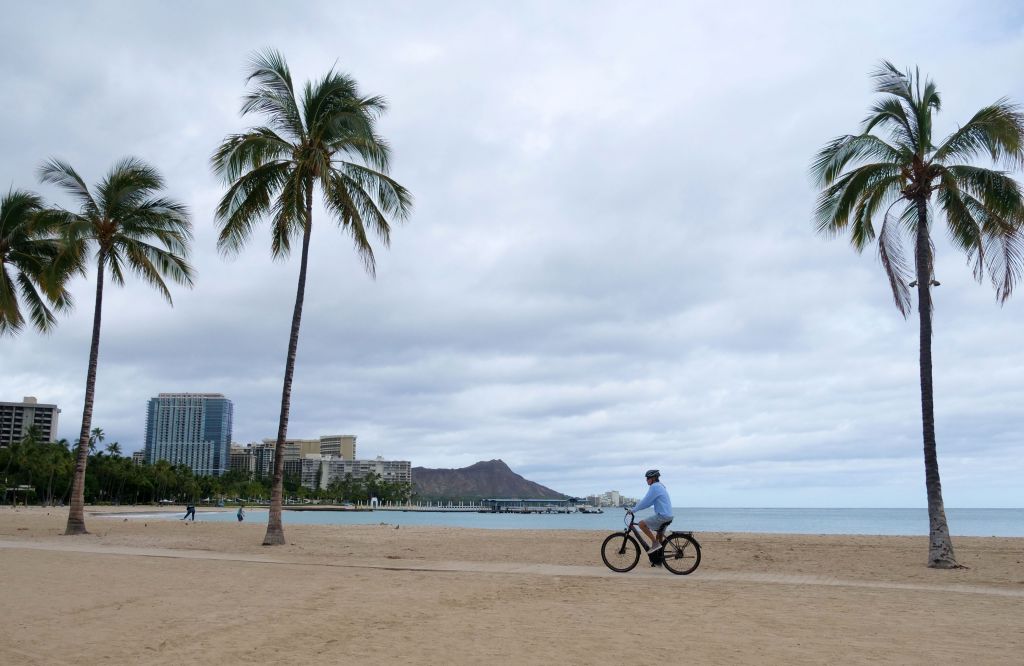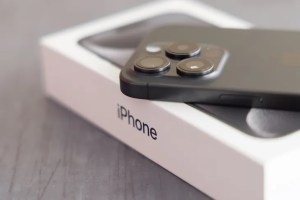When you’re a writer, there’s no such thing as a vacation — there’s just visiting a new place with the potential to gather more material. Lucky for me, my most recent destination happened to be Hawaii.
It’s a fascinating place, and if you didn’t already know it was a US state, it would be easy to mistake it for a distinct English-speaking country, albeit one with obvious and deep American influences. Oahu, the most urbanized island and home of the capital city of Honolulu, is shaped by an idiosyncratic mix of native Hawaiian, East Asian and midcentury American culture. Hawaii resembles a Pacific Island nation at least as much as it does the American mainland. Even using the term “mainland” to refer to what most of us think of as “America” highlights both the geographic and cultural distance.
You might wonder what I mean by “midcentury American culture.” The local, everyday Hawaiian food is instructive, with its mix of East Asian and old-fashioned American influences. Along with your poi, laulau, and lomi lomi salmon, for example, the iconic Helena’s Hawaiian Food also serves beef stew. The plate lunch, Hawaii’s famous meal invented by culturally diverse sugar and pineapple plantation crews, features a protein (such as grilled short ribs, teriyaki chicken, even Spam) served with rice and macaroni salad. One dish, known as the “loco moco,” is begging to be picked up by Waffle House: a mound of rice topped with a burger patty, a sunny-side-up egg, and a ladle of brown gravy.
Honolulu, despite its sky-high property values and global popularity, is full of humble, timeworn roadside drive-ins, some with classic neon signs, which have endured so long that they’re now a distinctive part of the city. In fact, much of the city’s built footprint is aging midcentury construction, from a time when Hawaii was equally trendy but much poorer. Many small apartment buildings from the 1960s or 1970s are indistinguishable from two-story motels. Honolulu vaguely resembles a Chinese or Japanese city with a sprinkling of Americana.
Whether to avoid crowds or save money, we skipped the luau, and stuck to the beaches and Japanese food, which is excellent and plentiful. (Did you know there are entire restaurants that serve only tonkatsu, the deep-fried pork cutlet offered rather perfunctorily on many American Japanese restaurant menus?) My wife and I made only quick stops at a tiki bar and the Dole Plantation, both of which have somehow avoided cancellation.
Native Hawaiians have a term — haole — that refers, often somewhat derogatorily, to foreign imports, but generally to people, and then usually Westerners. It might also refer to tourists, including those from the American mainland, for whom the perfect Hawaii getaway rarely has much to do with appreciating the island’s native people or culture at any depth.
For some “mainlanders,” the feeling might be mutual. The old imperialists liked the idea of tropical, exotic territories within their borders; some of today’s nationalists, perhaps, would be happy to give the island back to the Pacific. Hawaii itself is ambivalent about its geopolitical status. It even has a small but genuine independence movement.
And even those who don’t desire independence are still cagey about the kinda-sorta U.S.-backed overthrow of the Hawaiian monarchy in 1893 and the later U.S. annexation of the territory in 1898. (Grover Cleveland opposed the overthrow but declined to use force to restore the monarchy; expansionist William McKinley was happy to let bygones be bygones.)
We drove past President William McKinley High School in Honolulu, which, perhaps, will undergo renaming one of these days. We also listened to the tour guide at Iolani Palace, the former royal residence, who pointed to the palace’s indoor plumbing and telephone service with pride — even the White House didn’t have that! — and carefully stated that Queen Liliuokalani “yielded her authority,” a phrasing that leaves open the possibility that the Hawaiian monarchy still exists, awaiting restoration.
One can detect a (far more valid and historically rooted) sentiment here somewhat akin to the South’s “Lost Cause,” a sense of mourning and loss for a different reality that could have been and almost was. The difference, of course, is that Hawaii, a nation with its own deeply established culture, really was occupied. On the other hand, most Hawaiians supported joining the Union back in 1959, reasoning that it was better to be citizens than subjects.
The eventual absorption of the Hawaiian polity into either the American or Japanese — or, if it had somehow held on a few decades, the Chinese — sphere of influence was probably overdetermined. But the loss of independence is always traumatic. I can’t say that after this trip, I didn’t feel sympathy for the state’s ambivalence.
To look askance at this unique, complex, and diverse place, or to characterize its complex feelings as “anti-American,” would be simplistic and wrong. Oddly enough, an ambivalent Hawaii makes me proud to be an American. Many countries do not tolerate independence movements of any sort. I find it heartening that people who didn’t exactly choose US citizenship and didn’t really give up their erstwhile nationhood can openly discuss all of that. As for us haoles, our ability to critique ourselves is important. For all our faults, this points to a tolerant, bighearted, and easygoing streak in our national character.
Yes, my wife and I also visited beaches, drove ATVs at the Jurassic Park ranch, drank piña coladas out of hollowed-out pineapples, and ate Spam. But most visitors probably don’t intersperse all this with quite so much geopolitics and cultural history. I told you writers don’t get any vacations.


















